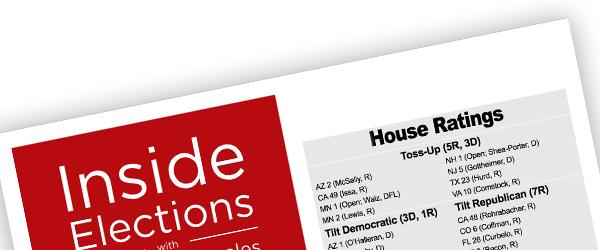2024 Elections Coming Down to the Wire
By Nathan L. Gonzales & Jacob Rubashkin
It wouldn’t take much for this election to look like a landslide in November. And it wouldn’t take a massive event to do it.
With former President Donald Trump and Vice President Kamala Harris running neck-and-neck in all seven toss-up states, a uniform shift (or a polling error) of 3 points in one direction could look like an Electoral College landslide. But it’s also possible that the two nominees battle it out and split the most important states and one candidate barely gets over the finish line.
While projecting a clear winner at this point is still difficult, it’s almost guaranteed that there will be an extended period of counting votes, legal challenges and certification issues in the days - and maybe weeks - after Election Day. In the end, a GOP sweep is possible, but divided government is the better bet.
Presidential
Another week without significant movement in the presidential race. Any talk about momentum is met with the reality of a stable race in which Trump and Harris are running within a point or two of each other in all seven of the toss-up states (Arizona, Georgia, Michigan, Nevada, North Carolina, Pennsylvania, and Wisconsin). You might still want to be Harris in the race because of money and organization, but that narrow advantage is looking increasingly insignificant.
Senate
Amidst the general uncertainty, GOP control of the Senate is the most likely outcome of the 2024 elections. Democrats have a narrow…

